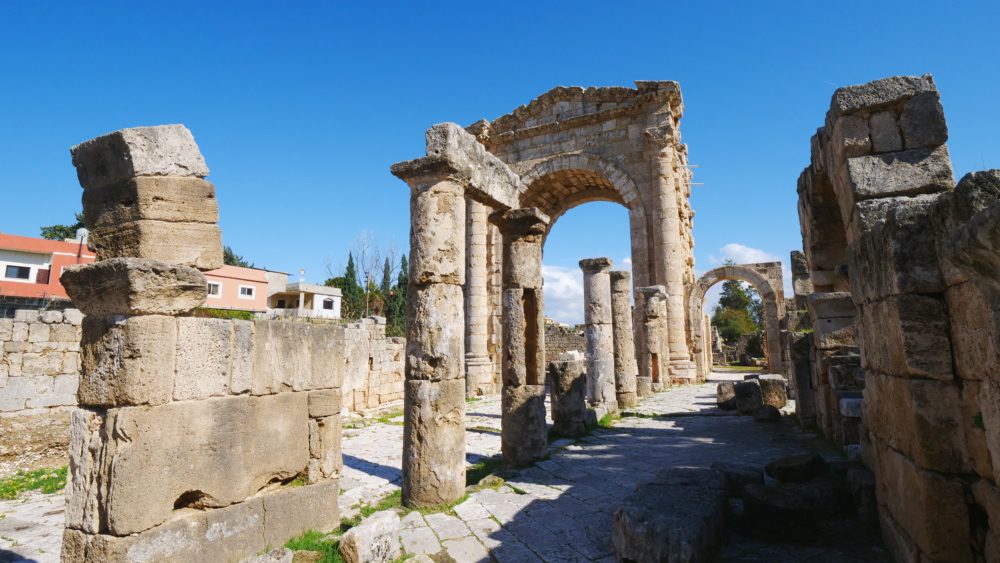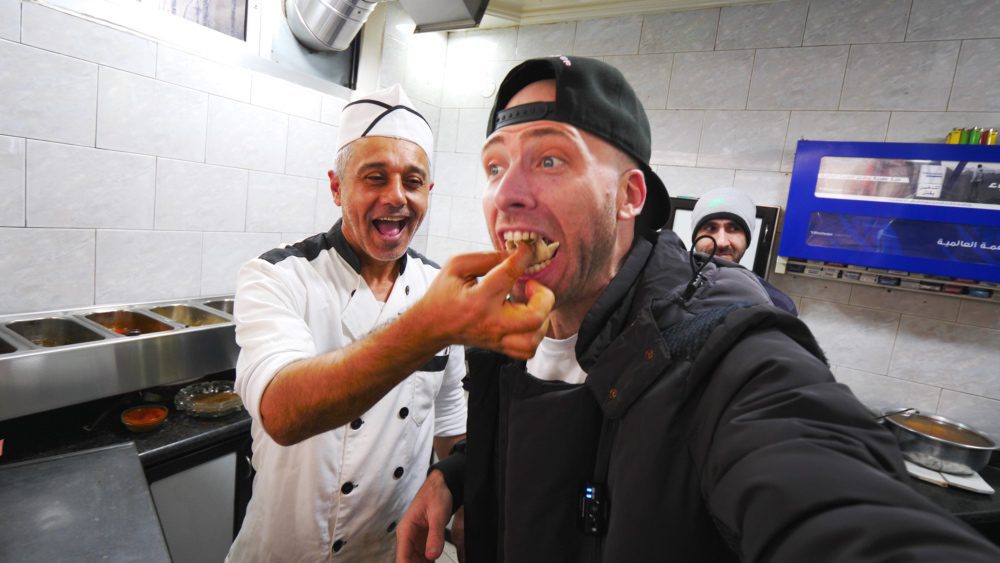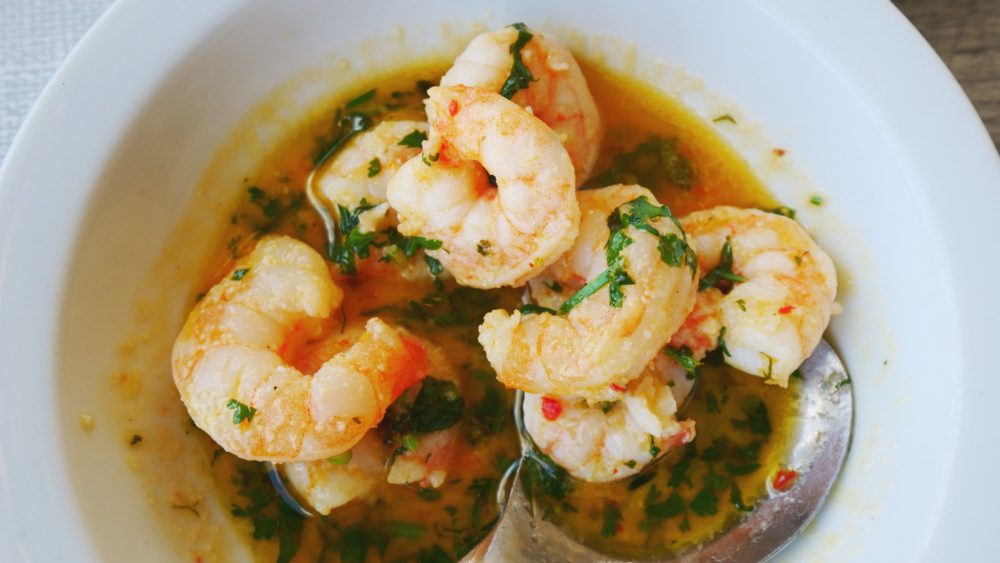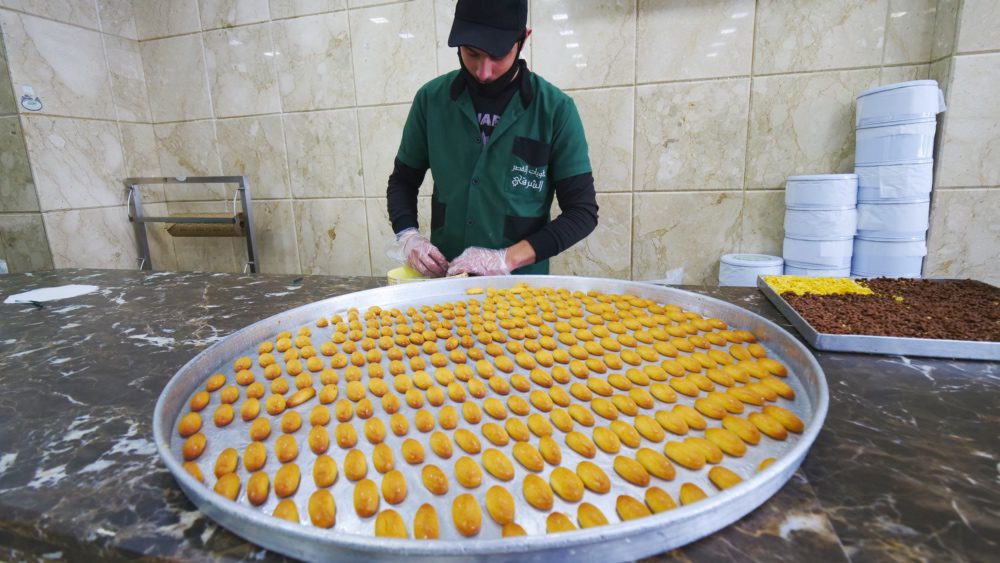My epic trip through Lebanon continued in Tyre, the country’s fourth-largest city. Come with me as I explore the city of Tyre, its food, and its ancient Roman ruins!
Tyre is one of the oldest continuously inhabited cities in the world. The entire city is a UNESCO World Heritage Site.

My friend and guide Nico and I would be exploring several of them today! Our exploration started at the Tyre Hippodrome, which was an ancient chariot racing venue. It seated up to 20,000 spectators and lies just to the south of the Al-Bass Tyre Necropolis.
These ancient Roman ruins date back to the 2nd century CE and became a UNESCO Heritage site in 1984.
I could see lots of old houses, crumbled walls, and an ancient tomb outside of the hippodrome. We walked down the main street, or Cardo Maximus, and continued through the large, arched gate. They renovate it often.
After climbing the seating, we drove to one of the longest public beaches in Lebanon. There are usually tents and seafood vendors there, but the beach was currently flooded.

After exploring the ancient Roman ruins around the hippodrome, we headed to the Old Town of Tyre. We stopped at Sandwich Mahfouz to get some fatayel, a pita sandwich with sliced lamb, tarator, tomatoes, and pickles. You can also get sandwiches with morrow (brain), sausage, kofta, liver, and kidneys.
It was nice and salty, juicy, and creamy. The outside was a little crispy, and the vegetables added some freshness. I loved how light and small it was!
Then, I got another one with sujuk. The spicy sausage was fantastic. It was only around $1.20 per sandwich. The sujuk was the best!
Then, one of the cooks even fed me sample the sheep brain fatayel! It was so good! It was easily my favorite of all of them!

Next, we walked around the Old Town. There were jewelry and clothing shops. Then, we walked down old alleys between old homes. We also saw an old house that had been converted into a Dar Camelia, a beautiful boutique hotel with 8 rooms.
The Old Town reminded me of Asilah, a town in northern Morocco. The colors and sandstone was very similar. Then, we saw the port and some seaside ruins. Next to the port is Le Phenicien, one of the area’s many seafood restaurants.

Lebanese seafood uses lots of coriander and lime juice. At Le Phenicien, we ordered some abou sin (raw fish), fried calamari, shrimp with coriander and lime, batrakh (spicy fish liver), tajin (fish, onions, nuts, & tahini dip), and fish kibbeh.
The abou sin with oil and lime juice was so succulent and fresh. I loved the pepper, too.
The batrakh was spicy and had a nice gravy! I loved the chunkiness and the heat, as well as the coriander.
The shrimp with coriander and lime juice was tender and succulent, and super light. I also loved the calamari with garlic sauce!
The tajin was an incredible fish dip, and with the kibbeh, it was unreal! It was my first time having seafood kibbeh. The onions and lime made it!
It was some of the best seafood of my life! It came to about $35 USD. Then, it was time to check out some more ancient Roman ruins!

Then, we drove two minutes to the ancient Roman ruins at Al Mina Archaeological Site, where there are lots of massive columns! It costs 6000 Lebanese pounds for non-foreigners to enter.
There was a temple here. There are also beautiful mosaics, old houses, a stadium, and more columns by the sea, which was the Sea Temple.
We had the entire site to ourselves! Further on were the sea and ancient Roman baths and houses.

Our final stop was Al Bohsali Sweets, where I tried shaabiyet, which is like a big baklava with heavy cream inside. It was full of crispy layers, pistachio, and cream.
Counter
101 Countries • 1432 Cities